The Molded Fiber Pulp Packaging Market is estimated to be valued at USD 10.15 Bn in 2025 and is expected to reach USD 14.87 Bn by 2032, exhibiting a compound annual growth rate (CAGR) of 5.6% from 2025 to 2032.
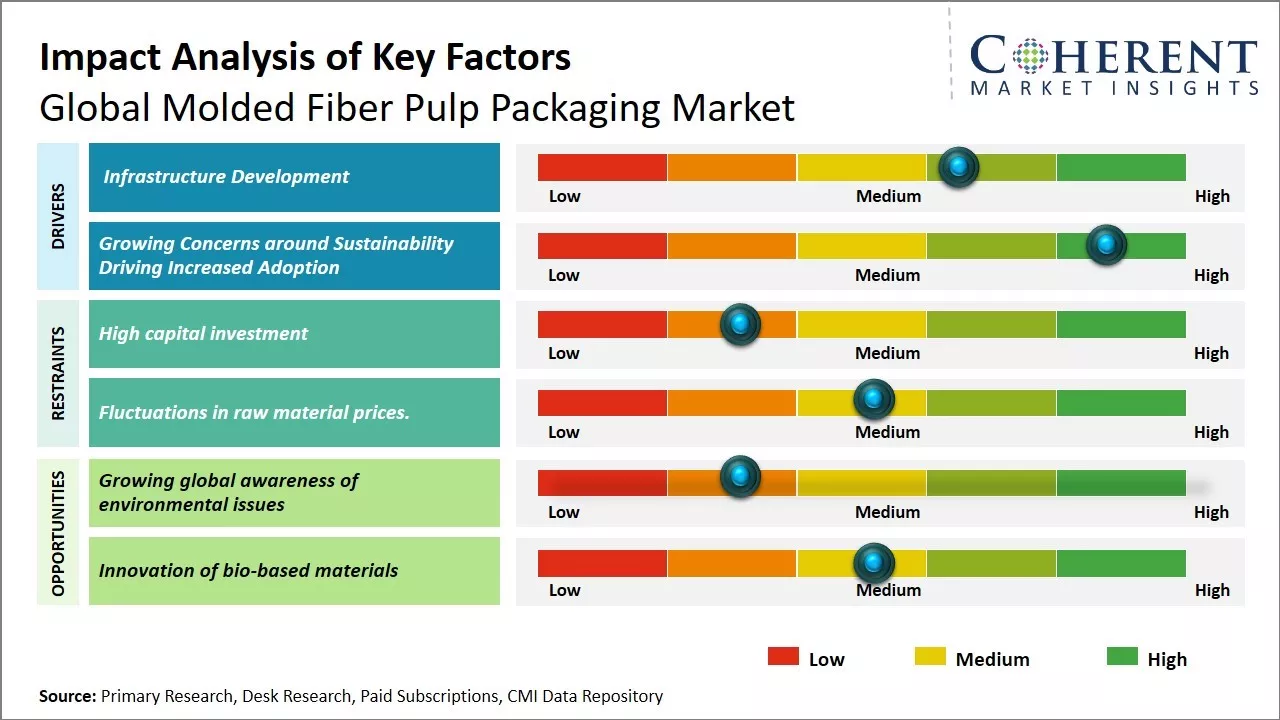
Discover market dynamics shaping the industry: Download Free Sample
Molded fiber pulp is considered an eco-friendly and sustainable substitute for foams and plastics. This has pushed its adoption across industries like food and beverages, electronics, healthcare, automotive, and others. The market is expected to witness significant growth over the forecast period. Rising environmental concerns regarding plastic waste and stringent regulations for plastic usage are expected to propel the growth of the molded fiber pulp packaging market. Growing e-commerce industry globally is also projected to boost the demand for protective & insulation packaging solutions including molded fiber pulp. Substantial investment in research & development to enhance product functionality and development of novel applications are also anticipated to offer lucrative opportunity.
Infrastructure Development
The rapid development of infrastructure across the world has created significant opportunities to boost the molded fiber pulp packaging industry in recent years. As governments invest heavily in constructing new roads, railways, ports, airports and other developmental projects, there is increasing demand for safe, durable and eco-friendly packaging solutions to transport construction materials and equipment over long distances. Molded fiber provides an ideal choice due to its protective properties and ability to withstand harsh external conditions. It protects contents from damage due to vibrations, moisture, compression and impacts during transit. A prime example is the large-scale infrastructure projects underway as part of China's Belt and Road Initiative. Massive investment is underway to build new railroads, highways, pipelines and logistics networks across over 68 countries in Asia, Africa and Europe. Chinese construction firms exporting machinery, tools and building materials require robust packaging for international shipments. Molded fiber pulp designed for its shock-absorbent properties help deliver goods intact even over thousands of miles through varied terrains. As ambitious infrastructure plans are realized across developing regions in Asia, Middle East, Africa and Latin America aiming to bridge gaps in transportation and energy access, the need for sustainable transit packaging like molded fiber will continue rising. Additionally, a recent report by the United Nations Department of Economic and Social Affairs found global infrastructure investment needs between 2016-2030 are estimated at USD 94 trillion with transportation, energy and utilities projects accounting for 60% of total requirement. As infrastructure spending worldwide accelerates to build modern networks, satisfy rising consumer demands and support economic growth, the molded fiber packaging industry stands to gain substantially through greater product protection needs in construction, manufacturing and logistics over the coming decade.
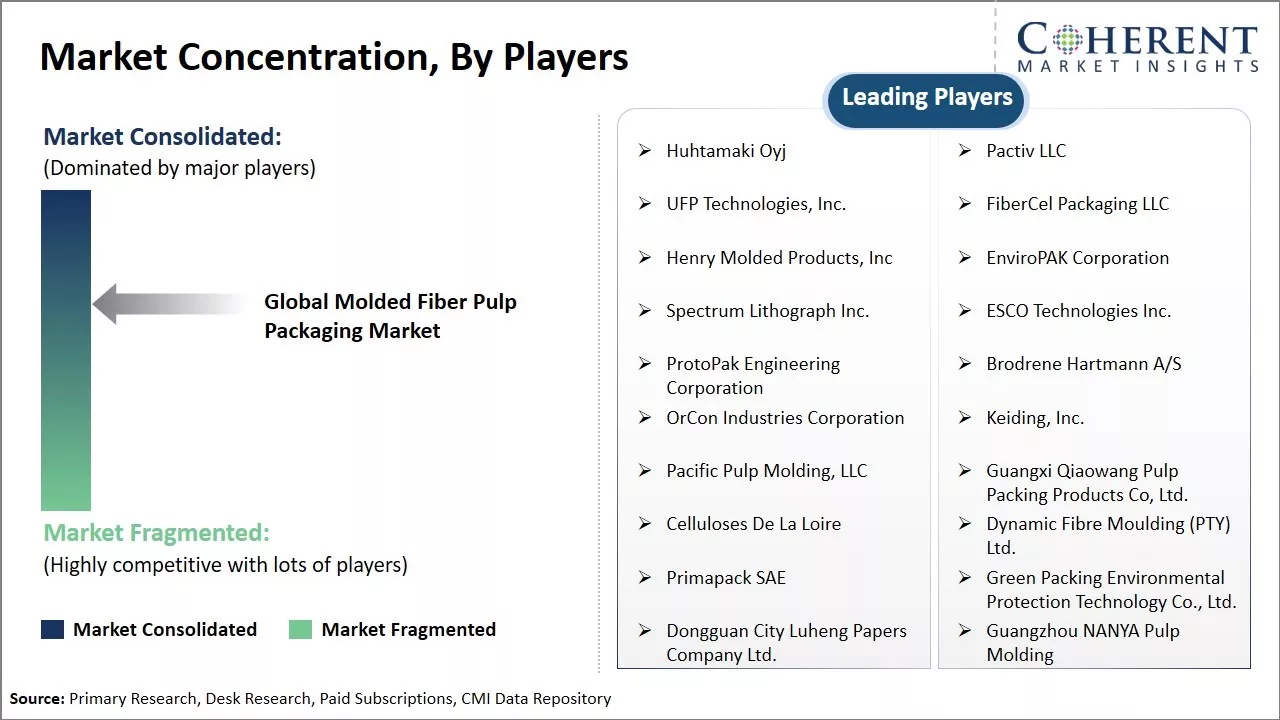
Get actionable strategies to beat competition: Download Free Sample
Growing Concerns around Sustainability Driving Increased AdoptionIn today's marketplace, sustainability has become a major consideration in procurement decisions across industries. There is significant consumer sentiment towards brands that use environment-friendly packaging materials and solutions. At the same time, regulators globally are imposing stricter rules aimed at reducing plastic waste and promoting a circular economy. This is driving many large retailers and manufacturers to make commitments around using post-consumer recycled or renewable content in their packaging. Molded fiber pulp, being manufactured from recycled paper fibers, fits well into the global sustainability agenda. It provides an excellent alternative to plastic packaging, especially for food and beverage, consumer goods, industrial and agricultural applications. The fact that molded fiber pulp is compostable and breaks down quickly in the natural environment is another big plus. This helps address the global problem of plastic pollution in oceans and landfills. Brands are able to differentiate their products in the market using molded fiber pulp packaging by communicating strong sustainable credentials to the environmentally conscious customers. The increased policy push and consumer demand for sustainable options are convincing many companies to adopt molded fiber pulp to meet their packaging and business needs.
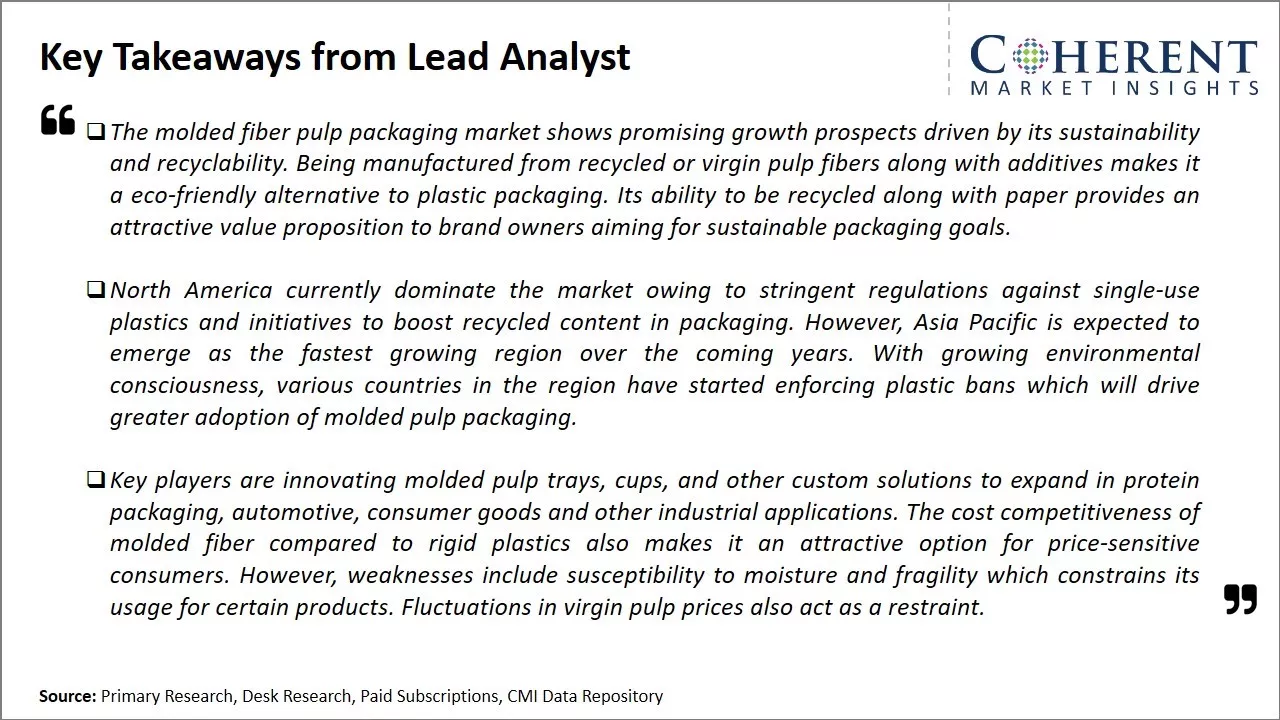
To learn more about this report, Download Free Sample
Challenges: High capital investmentHigh capital investment requirements for manufacturing plants and machinery pose significant barriers to entry for small players. Raw material costs, especially for virgin wood fibers, are subject to volatility. Developing innovative and sustainable fiber sources remains an obstacle. Additionally, Molding complex shapes at high speeds and maintaining consistent quality also challenges producers. Changing consumer preferences toward recyclable and sustainable materials increase pressure on traditional packaging options.
Opportunities: Growing global awareness of environmental issues
Global awareness of environmental issues drives demand for renewable and degradable alternatives to plastic. Supportive government regulations in major economies incentivize use of molded pulp. Additionally, Lightweighting and customized design capabilities allow molded fiber to replace more materials. E-commerce growth increases need for protective yet low-cost packaging. New technologies facilitate advanced molding at lower costs. Partnerships along supply chains help offset capital costs and boost accessibility.
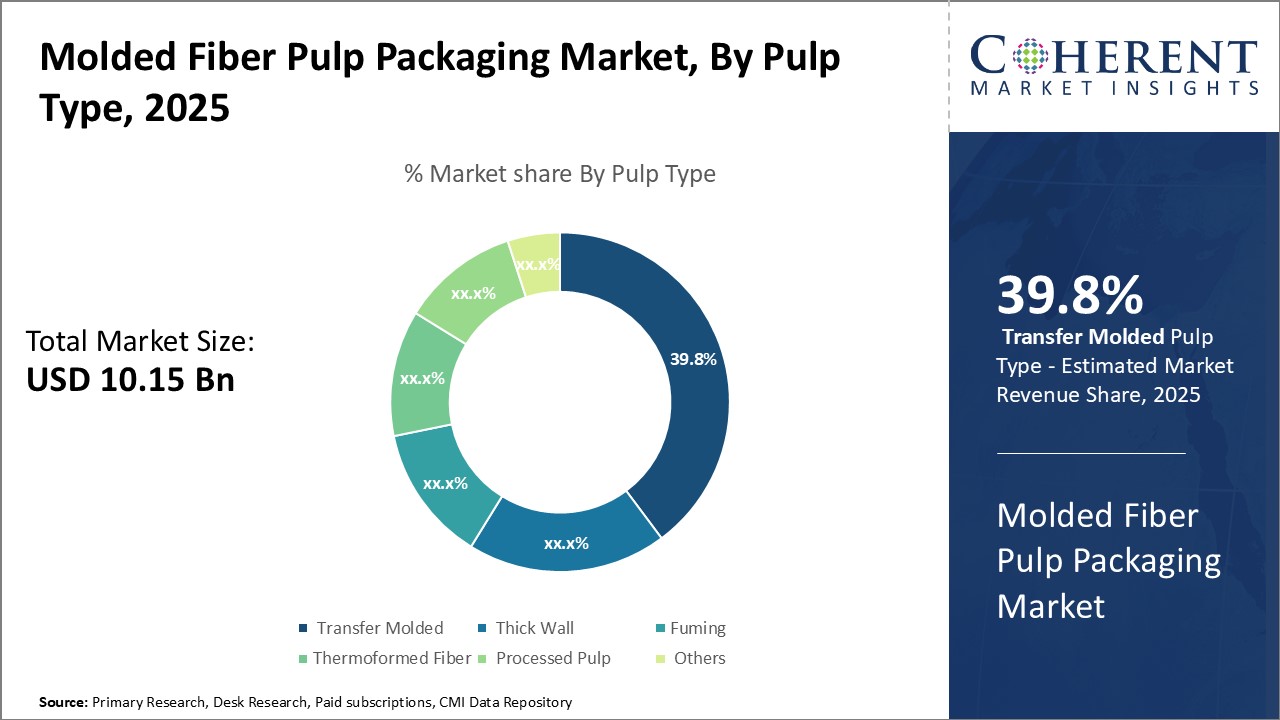
Discover high revenue pocket segments and roadmap to it: Download Free Sample
Insights, By Pulp Type: Advancements in Fiber Molding Techniques Drives Transfer Molded Segment GrowthIn terms of Pulp Type, Transfer Molded contributes the 39.8% share of the market owing to advancements in fiber molding techniques in 2025. Transfer molding allows for intricate design possibilities due to the ability to accurately transfer intricate design details from a male mold to the molded fiber pulp. This helps create custom contoured and shaped packaging solutions. Additionally, transfer molding is a continuous process allowing for high production rates to meet bulk packaging needs for various industries like food and consumer goods. The consistent reproducibility of designs achieves uniformity in packaging for better branding and supply chain management. Ongoing R&D is further improving transfer molding techniques to develop strong and durable products from renewable fiber sources like agricultural residue fibers. This is expected to boost sustainability and drive greater adoption of transfer molded pulp packaging across industries.
Insights, by Product Type: Versatility Drives Increased Use of Trays in Molded Fiber Pulp Packaging
In terms of Product Type, Tray contributes the 34.2% share of the market owing to its versatility in 2025. Trays made from molded fiber pulp can be easily customized in various shapes and sizes to suit packaging needs across industries. Their rugged designs provide protection against damage during transport and warehousing. Additionally, trays are lightweight and cost-effective. Their plain or compartmentalized designs facilitate packaging of multiple items together or segregation of items based on type. This makes them suitable for packaging agriculture produce, frozen foods, consumer goods, pharmaceuticals, electronics and more. Their moisture resistance properties maintain freshness of contents without soaking or leaking. Rapid production processes deliver trays in large volumes to meet bulk packaging demands of industries conveniently.
Insights, By End-use: Need for Sustainable Food Packaging Boosts Fiber Molded segment in Food industry
In terms of End-use, Food Packaging contributes the 38.1% share of the market owing to the need for sustainable packaging solutions in 2025. Molded fiber pulp is emerging as an eco-friendly alternative to plastic and Styrofoam packaging widely used in food industry currently. It is produced from recycled paper fibers and agricultural residues making it renewable and compostable. This addresses concerns around plastic pollution. Molded pulp packaging maintains food freshness while allowing producers to meet sustainability targets. They securely hold foods and beverages without leaching of bad odors, colors or flavors. Production processes achievement tight moisture and gas barriers. Their printability allows vibrant, informative graphic designs helping better branding and visibility on shelves. Research is also extending their temperature resistance range to accommodate hot or frozen foods conveniently without compromise.
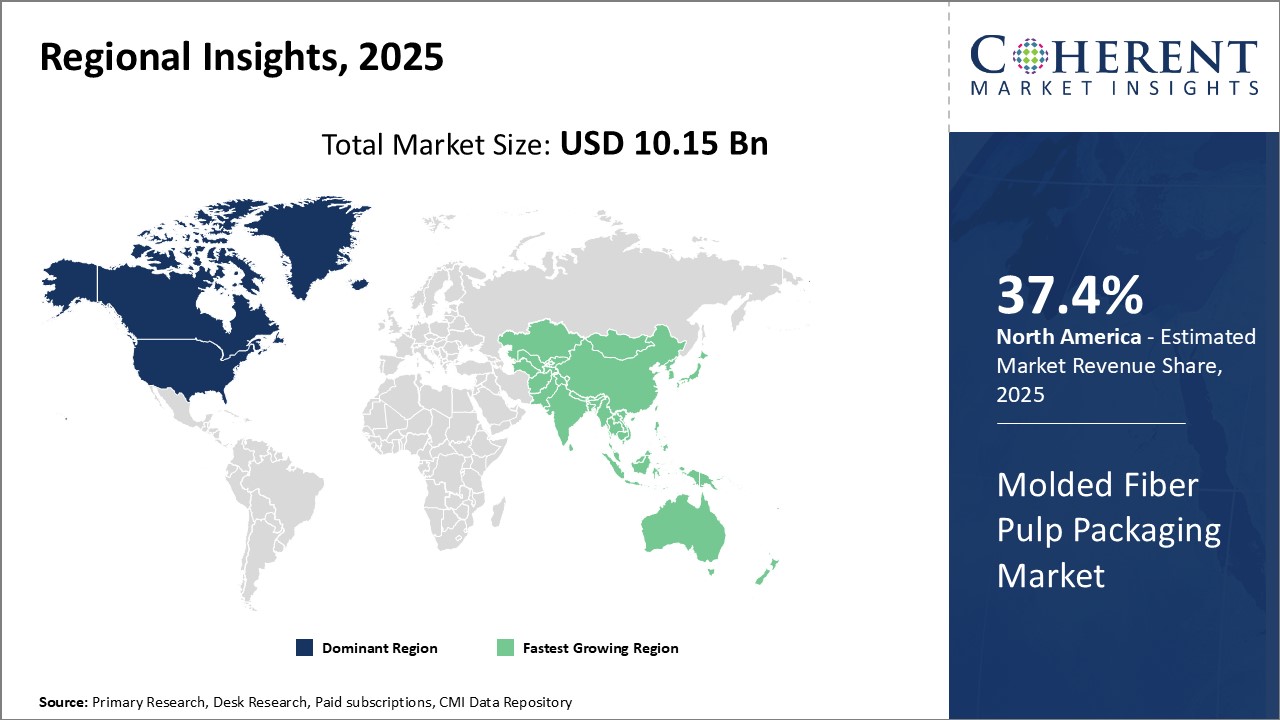
Need a Different Region or Segment? Download Free Sample
North America has established itself as the dominant region in the global molded fiber pulp packaging market. The region accounts for over 37.4% in 2025 of the worldwide demand for molded fiber owing to the strong presence of food and beverage manufacturers. Since molded pulp is largely used for protective packaging of food products, countries like the U.S. and Canada with their massive food processing industries naturally lead the molded fiber consumption. Moreover, North America is at the forefront of innovation in packaging technologies, giving local companies an advantage in developing novel and sustainable molded fiber solutions.
The Asia Pacific region has emerged as the fastest growing regional market for molded fiber globally in recent years. Countries such as China, India, and Indonesia are witnessing double digit growth in demand due to increasing export focus of their industries. Presence of a large consumer base has led food and electronic goods companies to ramp up production for both domestic consumption as well as exports. This has significantly boosted the requirement for protective and cost-effective packaging like molded pulp. Environmental regulations are also becoming stricter in Asia, pushing manufacturers to adopt sustainable alternatives to plastics such as molded fiber. Furthermore, regional players have enhanced their manufacturing prowess, enabling them to meet the growing needs of multinational firms setting up production bases in low-cost Asian countries. This has made Asia Pacific extremely lucrative for molded fiber producers targeting overseas expansion.
Molded Fiber Pulp Packaging Market Report Coverage
| Report Coverage | Details | ||
|---|---|---|---|
| Base Year: | 2024 | Market Size in 2025: | USD 10.15 Bn |
| Historical Data for: | 2020 To 2024 | Forecast Period: | 2025 To 2032 |
| Forecast Period 2025 to 2032 CAGR: | 5.6% | 2032 Value Projection: | USD 14.87 Bn |
| Geographies covered: |
|
||
| Segments covered: | |||
| Companies covered: |
Huhtamaki Oyj, Pactiv LLC, UFP Technologies, Inc., FiberCel Packaging LLC, Henry Molded Products, Inc, EnviroPAK Corporation, Spectrum Lithograph Inc., ESCO Technologies Inc., ProtoPak Engineering Corporation, Brodrene Hartmann A/S, OrCon Industries Corporation, Keiding, Inc., Pacific Pulp Molding, LLC, Guangxi Qiaowang Pulp Packing Products Co, Ltd., Celluloses De La Loire, Dynamic Fibre Moulding (PTY) Ltd., Primapack SAE, Green Packing Environmental Protection Technology Co., Ltd., Dongguan City Luheng Papers Company Ltd., and Guangzhou NANYA Pulp Molding |
||
| Growth Drivers: |
|
||
| Restraints & Challenges: |
|
||
Uncover macros and micros vetted on 75+ parameters: Get instant access to report
*Definition: The Molded Fiber Pulp Packaging Market consists of companies that manufacture molded fiber pulp products for packaging applications. Molded fiber pulp is produced from recycled newspaper, Corrugated Box Trimmings, and other Recyclable Paper products that are molded under heat and pressure into shape without adhesives.
Share
Share
About Author
Kalpesh Gharte is a senior consultant with approximately 5 years of experience in the consulting industry. Kalpesh holds an MBA in Operations and Marketing Management, providing him with a strong foundation in market strategy and analysis. He has contributed to various consulting and syndicated reports, delivering valuable insights that support informed business decisions
Missing comfort of reading report in your local language? Find your preferred language :
Transform your Strategy with Exclusive Trending Reports :
Frequently Asked Questions
Joining thousands of companies around the world committed to making the Excellent Business Solutions.
View All Our Clients